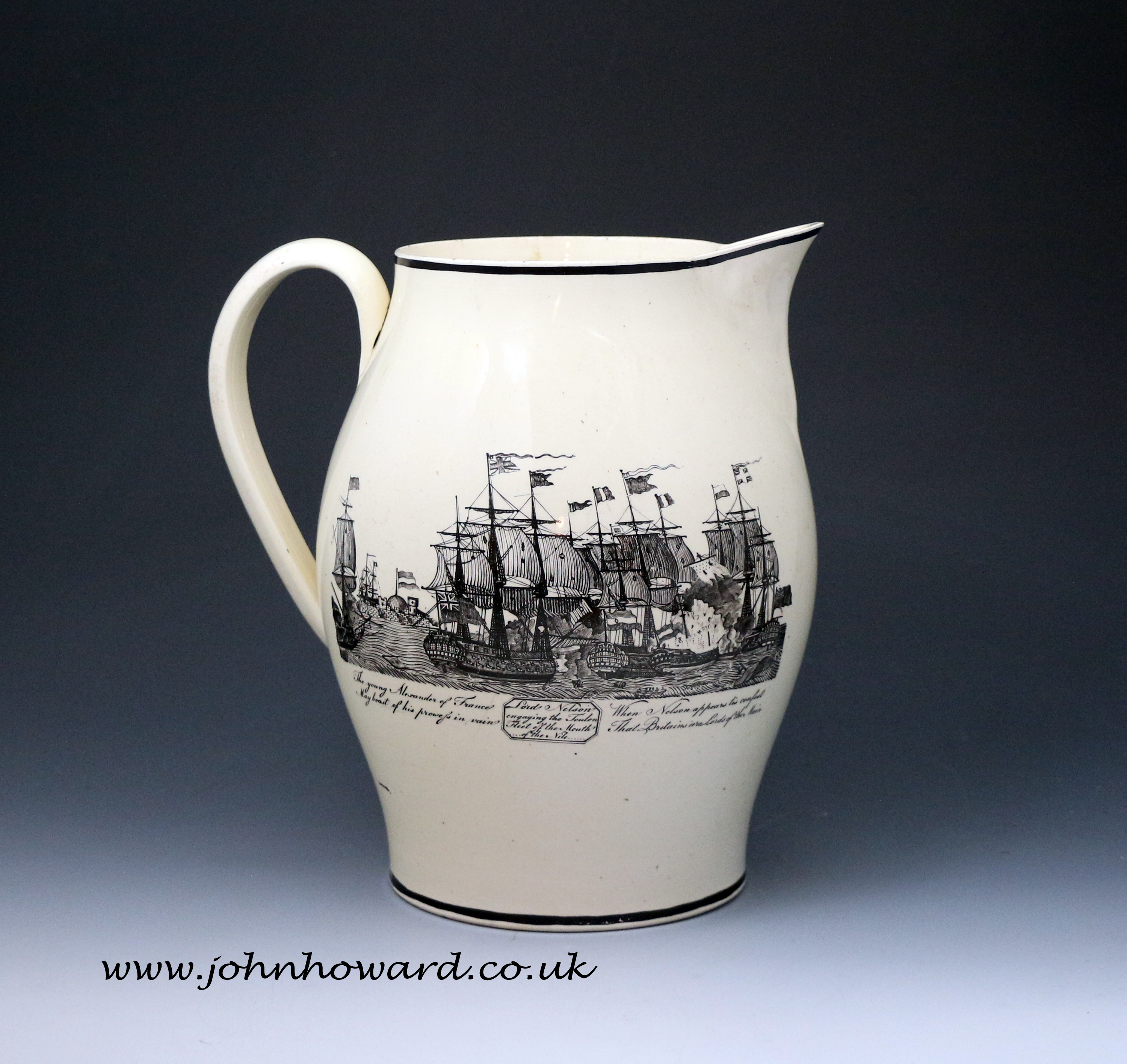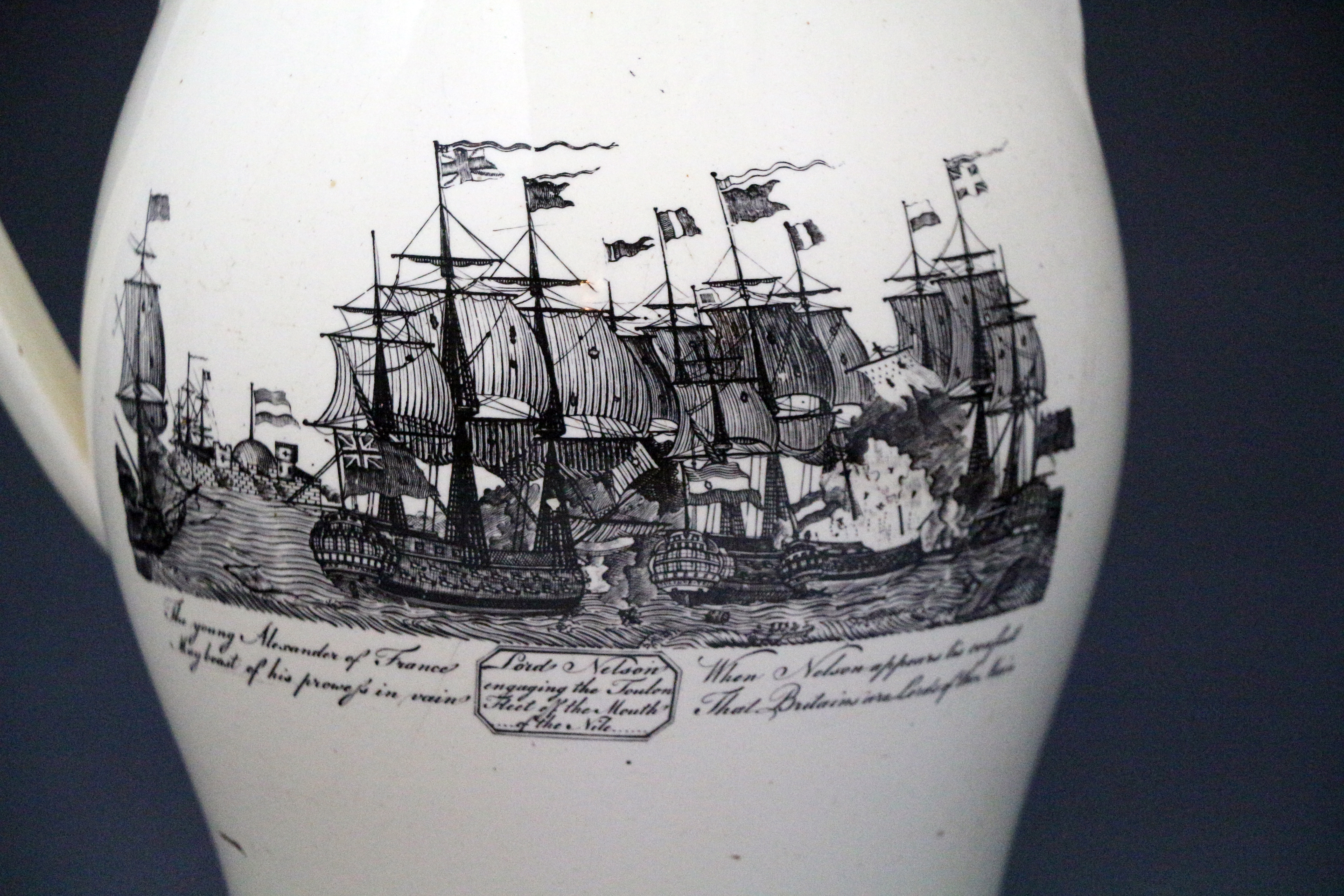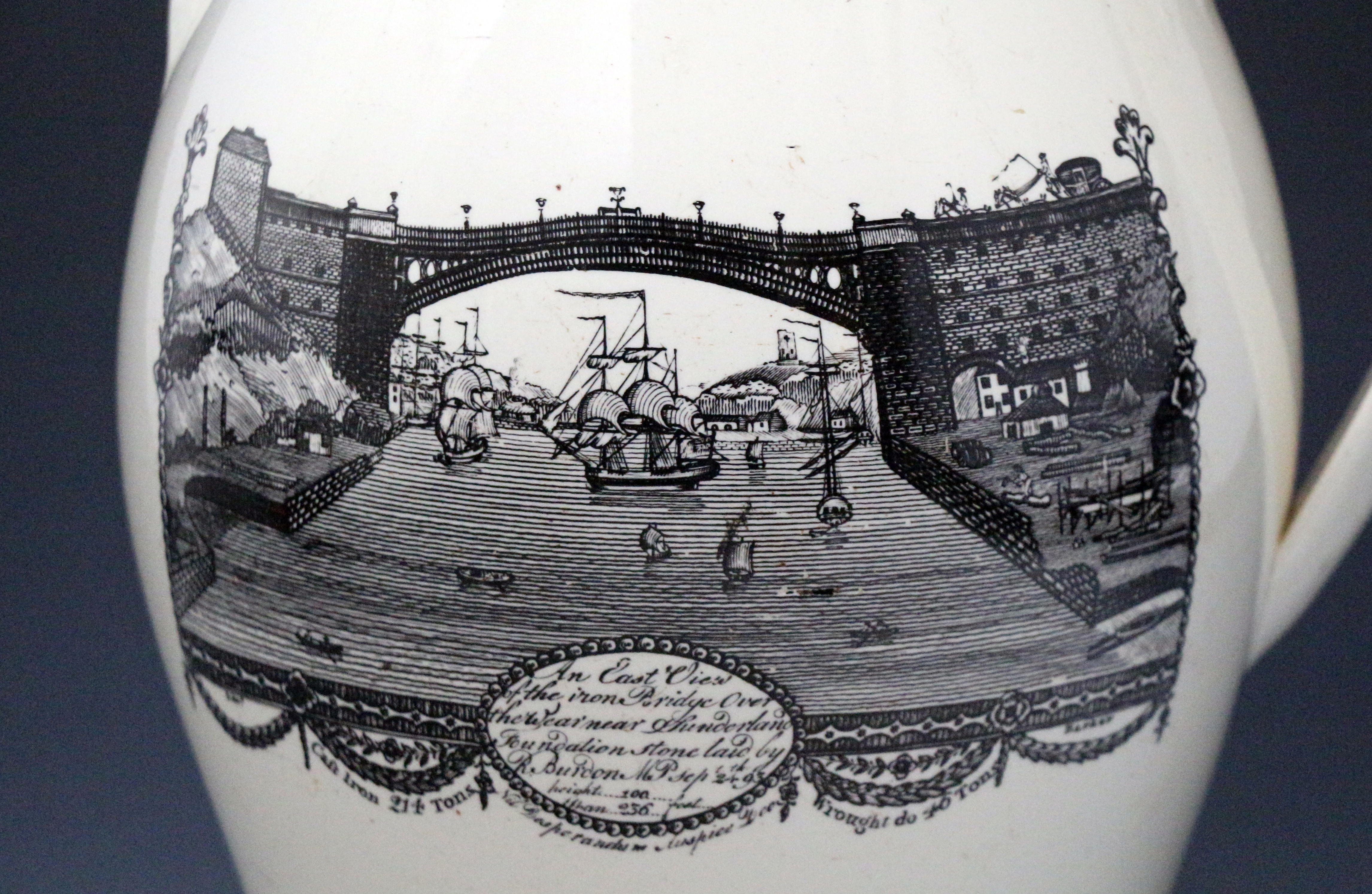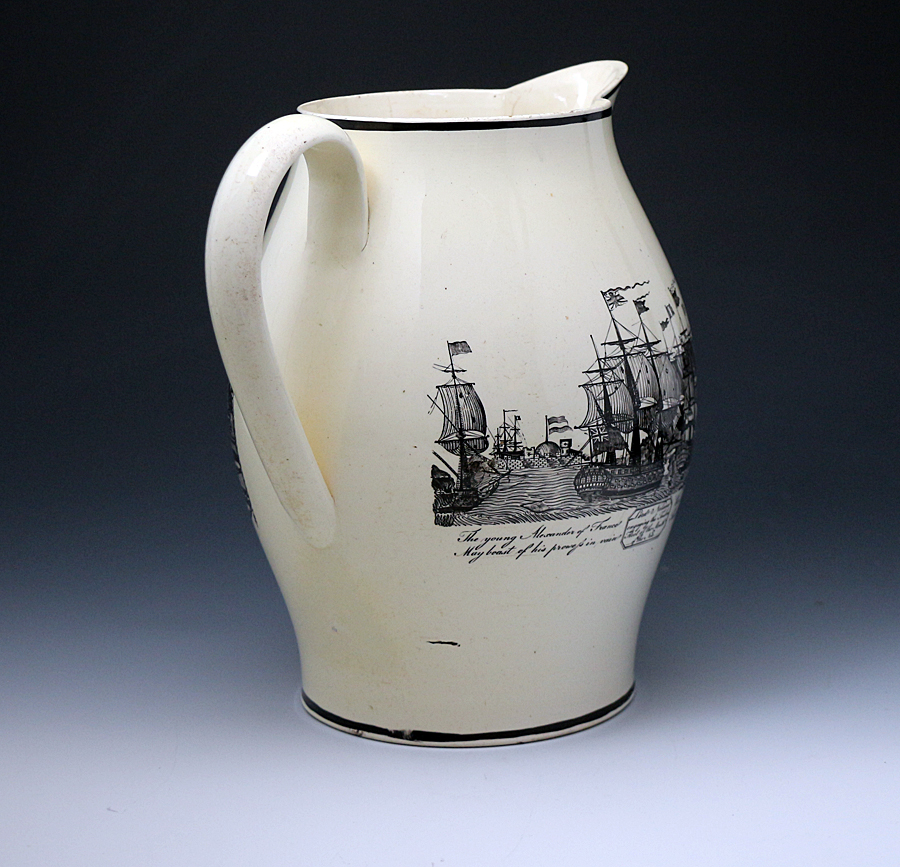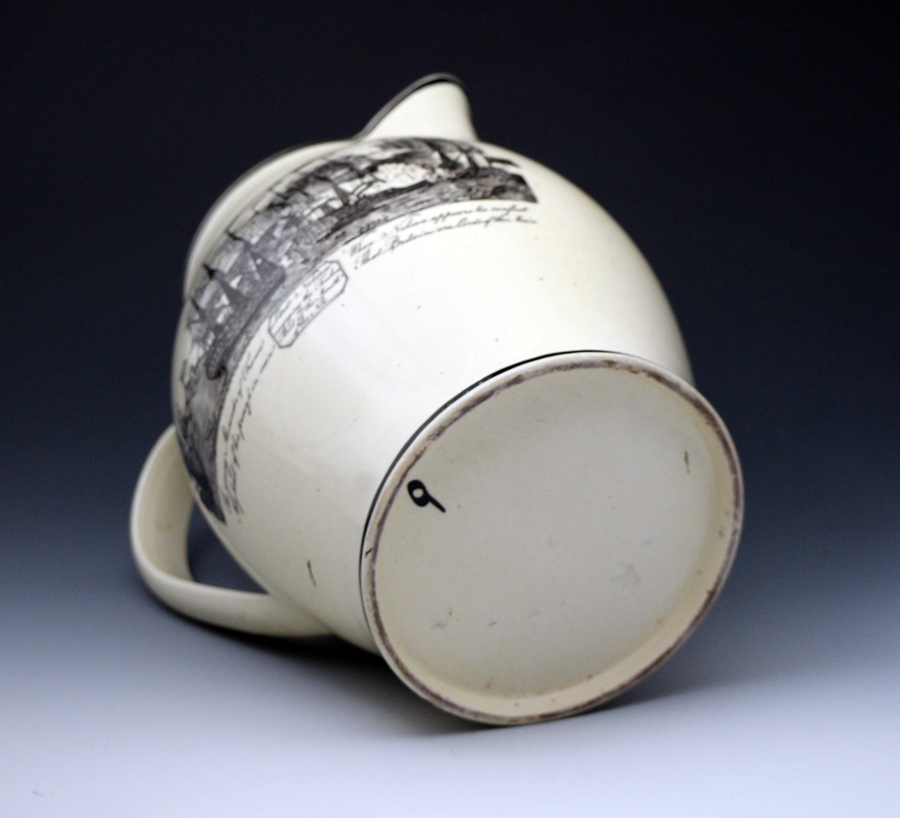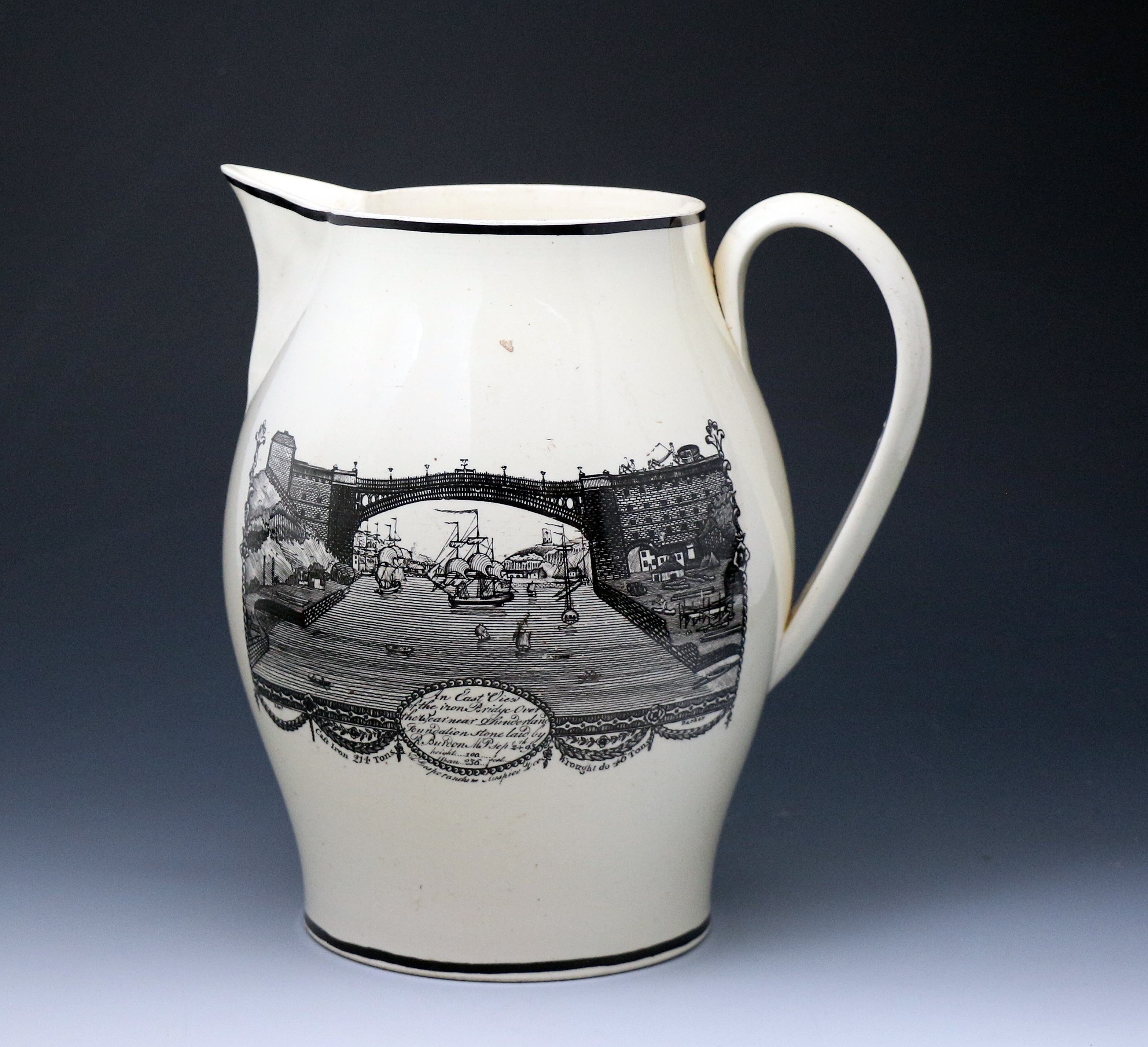Description
A creamware pitcher with black and white transfer prints and made at the Scotts Southwick Pottery in the late 18th century period.
One print commemorated Nelson’s victory over the French at the Battle of the Nile in 1798 with a view of the battle with a patriotic verse Brittains are Lords of the main. The other print shows one of the earliest engravings of the newly opened Iron Bridge over the River Wear in Sunderland with the name of the engraver Edward Barker.
The pitcher is in very clean condition and exceptionally rare commemorating Nelsons Victory at the mouth of the River Nile.
NOTES;
The Battle of the Nile was a major naval battle fought between the British Royal Navy and the Navy of the French Republic at Aboukir Bay on the Mediterranean coast of the Nile Delta of Egypt from the 1st to the 3rd of August 1798.
The Iron Bridge in Sunderland opened in 1796, with the foundation stone having been laid in September 1793. It was sponsored and patented by Rowland Burdon, the MP, designed by Thomas Paine, and built under the direction of Thomas Wilson, who designed its architectural features. According to the plaque on the current bridge, its construction “proved to be a catalyst for the growth of Sunderland,” since access between Monkwearmouth and Bishopwearmouth had previously only been by ferry, with the nearest bridge at Chester-le-Street. There was originally a toll for traffic and pedestrians, although tolls for pedestrians were abolished in 1846.
It was the second iron bridge built after the famous span at Ironbridge but was over twice as long with a nominal span of 240 ft (73 m), and only three-quarters the weight. Indeed, at the time of building, it was the biggest single-span bridge in the world (72 m), matching the collapsed Trezzo Bridge. It opened to traffic on 9 August 1796, having cost a total of about £28,000. (Wikipedia).


